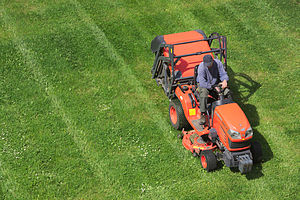
In the 1980ies after an epidemic of injuries related to walk-behind power mowers, The Consumer Product Safety Commission implemented mandatory safety standards for mowers but riding mowers were excluded from them. Some manufacturers propose riding mowers that can mow in reverse. These type of mowers are the most dangerous to young children. In 2003 after a rise of accidents a voluntary standard was adopted by lawn mower manufacturers. The standard requires that the blade immediately stops to spin when the mower riders back up. However the standard also allowed manufacturers to install a button that allows the driver to override the feature. Manufacturers are claiming that they installed the button at the request of their consumers who want more flexibility but safety advocates reply that the button is a good excuse for manufacturers to protect themselves from lawsuits. However this excuse didn’t always work for the manufacturer Deere & Co. In a recent lawsuit involving a 2 year old girl whose leg was amputated after her dad backed over her while riding a Deere mower, the jury found that the mower was defective and awarded the victim $12.25 million. The jury found that Deere was responsible for 78% of the damages and put the rest of the blame on the father.
Read more in Fair Warning
Picture: courtesy of Wikimedia, author: Pine
